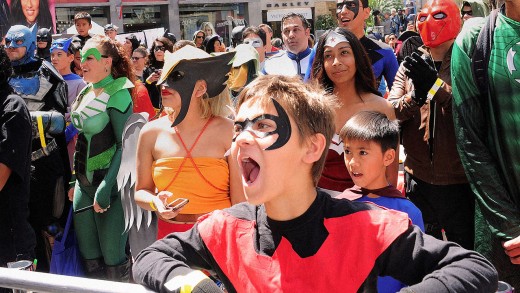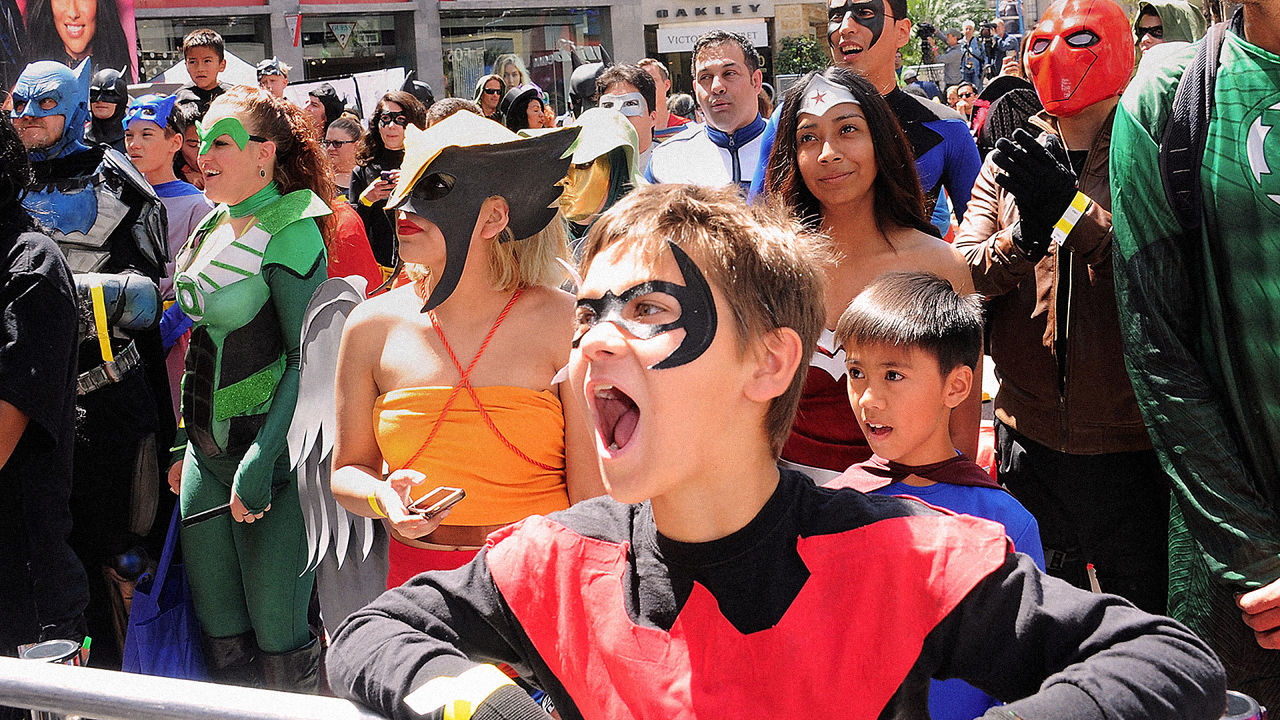Why Superfans will also be super-horrifying for firms
In designing experiences that generate avid audiences, corporations must be ready to lose keep an eye on, says historian Daniel Cavicchi.
July 15, 2015
enthusiasts have helped define the digital age. consumer-centered, consumer-created, consumer-pushed, and person-generated strategies to constructing on-line content all acknowledge the possibility of passionate audiences. Twitter, facebook, Tumblr, Instagram, and different social media platforms inspire folks to “like,” “share,” “remark,” and “observe”—terms that gesture towards fan behaviors and values. whereas players, Deadheads, and different fan teams have been early adopters of internet bulletin boards and discussion lists, up to now twenty years there was an explosion of fan activity online, from delusion football to FanFiction.net.
yet nowadays’s hyper-connected world has now not erased fear in regards to the nature of “fannish” relationships. a brand new PBS documentary, “web Junkie,” for example, depicts the scientific rehabilitation of chinese teens which have turn out to be hooked on video games; they are unable to distinguish between recreation worlds and the real world. on-line crowdsourcing has enabled performers like Amanda Palmer to enhance incredibly shut and productive relationships with enthusiasts, which she promotes as a part of a punk communal aesthetic, but she has also been accused of hypocritically using the power of technology to control her followers to enhance her personal achieve. Even leisure firms, like Lucasfilm or Warner Brothers, after explicitly in quest of to nurture target market engagement with devoted fan sites, have ended up backpedalling into protective positions over mental property, when they’ve realized enthusiasts’ tales and paintings will not be exactly what they bargained for.

Maniacs and Matinée women
curiously, this cold and hot dynamic of fandom is woven during American history. The time period “fan,” as a shortened type of “fanatic,” was once first utilized by American sports writers within the 1890s to playfully mock rowdy baseball rooters, however fan-like consumers had been around for the reason that market revolutions of the late 18th century, when entrepreneurs first tried to promote “amusements” to the general public. Proto-fanatics (recognized variously as amateurs, beggars, boomers, bugs, connoisseurs, devotees, dilettantes, fanatics, lovers, the fondness, fiends, gluttons, habitués, heads, hounds, kranks, lions, longhairs, fans, maniacs, matinée girls, nuts, rooters, Lisztians, Wagnerians, and other terms) were folks that excitedly embraced commercialized culture so that you can signal that they—continuously young migrants to cities—had thrown off the outdated pastimes of church and village and embraced a modern cosmopolitanism.
Early public concert events in the 1840s, as an example, have been magnificent to those that had previously experienced tune simplest with the aid of having to make it themselves. For the mere buy of ticket, they could sit and take heed to the dizzying feats of a virtuoso in a grand live performance corridor. The enchantment of “just listening” was electrical. song fanatics developed new practices of “live performance-going,” by which they reserved one of the best seats in theaters, saw all performances by means of journeying musicians, and lengthened their enjoyment through recording their feelings in diaries or scrapbooks. Poet Walt Whitman participated, listening to many of the main virtuosos who passed through NY city within the late 1840s and rhapsodizing about his listening experiences in poems and journal entries. Nathan Beekley, a younger clerk in 1849 Philadelphia, discovered himself unable to withstand going to musical performances 4 nights every week or attending Anglican, Episcopalian, and Free church products and services on Sundays to be able to hear extra tune. lots of of heaps of individuals welcomed opera singer Jenny Lind to the usa on her 1850 tour, no longer simplest by way of attending her performances, but in addition putting lithographs of Lind of their properties, adopting her model sense, and buying Lind-branded soap, boots, lamps, and hats.

on the similar time, simply as lately, there have been considerations. In 1850, P.T. Barnum, Jenny Lind’s tour supervisor, used to be excoriated within the press for his blatant “humbug” and manipulation of the lots thru “puffery” and merchandising; one caricature depicted the Lind target audience as animals guided with the aid of a demonic Barnum/Noah into the ark of a live performance corridor. more ominously, fandom become linked to disease. new york newspaper columnist Donald provide Mitchell simplest 1/2-jokingly when put next public enthusiasm for Lind to the Plague: “It was truly an terrible exhibition to peer hundreds of these sufferers dashing alongside the streets, despite all bizarre proprieties, and every now and then screaming out at the very top of their voices…Some carried big bouquets of flowers, which they threw into the carriage of leave out Lind, and kissed their arms, and made all types of antics; after which they either grew melancholy, and slipped away throughout the back-streets, or quieted themselves with drink.” Between 1830 and the 1870s, scientific dictionaries even listed a disease called “musicomania,” wherein “the eagerness for music is carried to such an extent as to derange the mental faculties.”
From Activation to Ecstasy
What does it mean? Time and time again, enthusiasts have confirmed that they’re top customers. they have got eagerly purchased products and services, and picked up each piece of merchandise that may be related to their pursuits or improve their fascinations. This helps income and may also be relatively horny. however fanatics blatantly eschew the basic equation of a single price for a services or products for deeper sorts of relationship marked by way of lasting intimacy and heightened feeling. In different phrases, if they’ve seen a express, they resist leaving the theater. fanatics enable their participation in tradition to infuse their day by day lives, sustaining their emotions as target market individuals by engaging more books, more games, extra concert events; accumulating souvenirs, making pilgrimages, contacting stars, trading information with different fans, and performing themselves. now not most effective does this put monumental power on producers to fulfill needs that beyond their capabilities, it rubs in opposition to Western industrial society’s expectations for moderation and self-regulate. Fan ecstasy, like every ecstasy, threatens the ordinary.

Some social media startups is also wanting to lend a hand companies “prompt customers” and “maximize engagement,” but in fact that whereas enthusiasts could eagerly purchase services and products, they specifically regard that task as inappropriate and even antithetical to what fandom is all about. it usually is a contradiction, however trying to unravel it handiest erases its energy. As pupil Matt Hills has defined: “lovers are each commodity-completists and so they categorical anti-industrial beliefs.” in spite of everything, that is why fans are so fascinating: for at least 200 years, they have helped us to take into consideration the fight for—and consequences of—loving participation in a market-pushed world.
[Top Photo: Albert L. Ortega/Getty Images]
(102)














